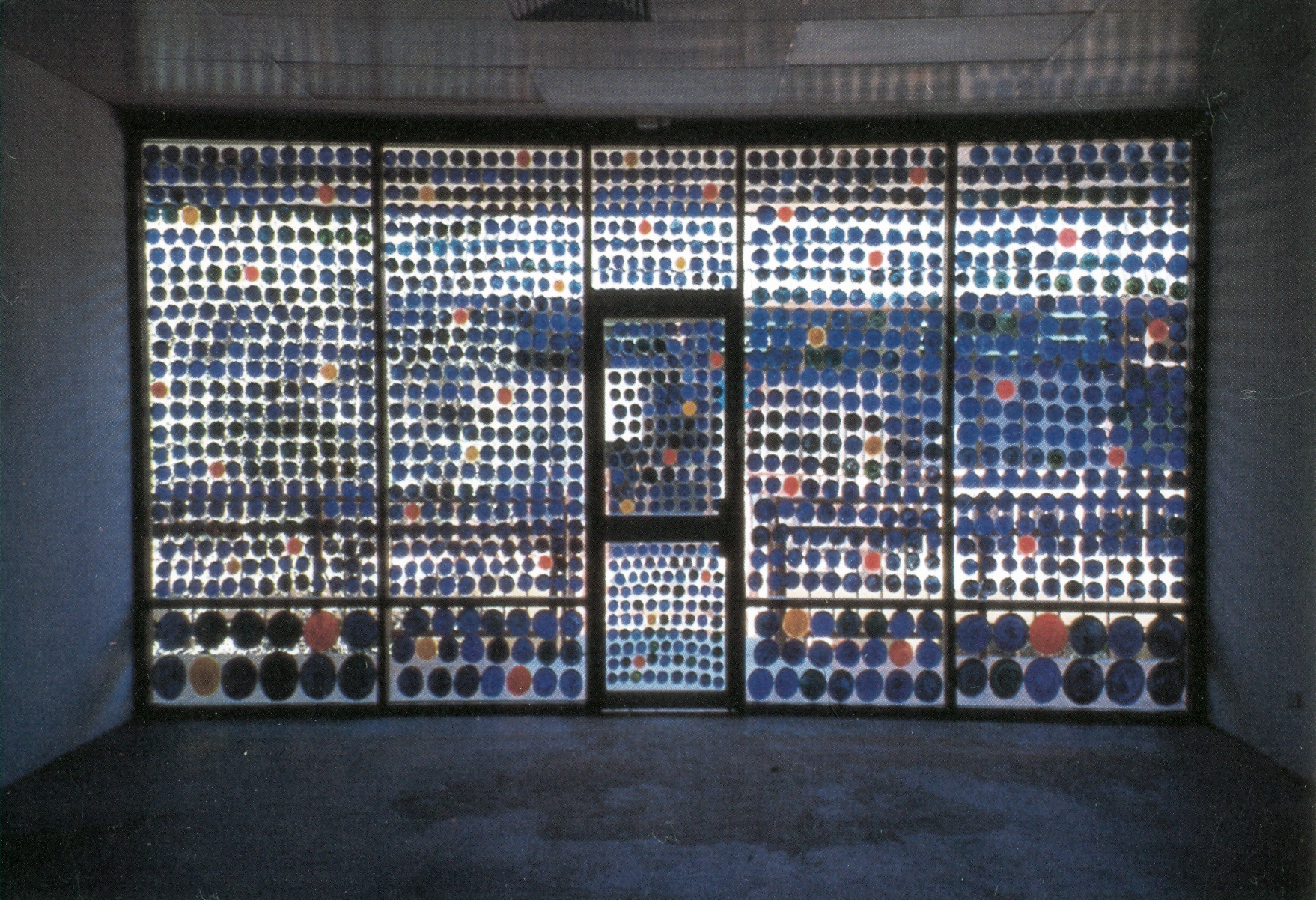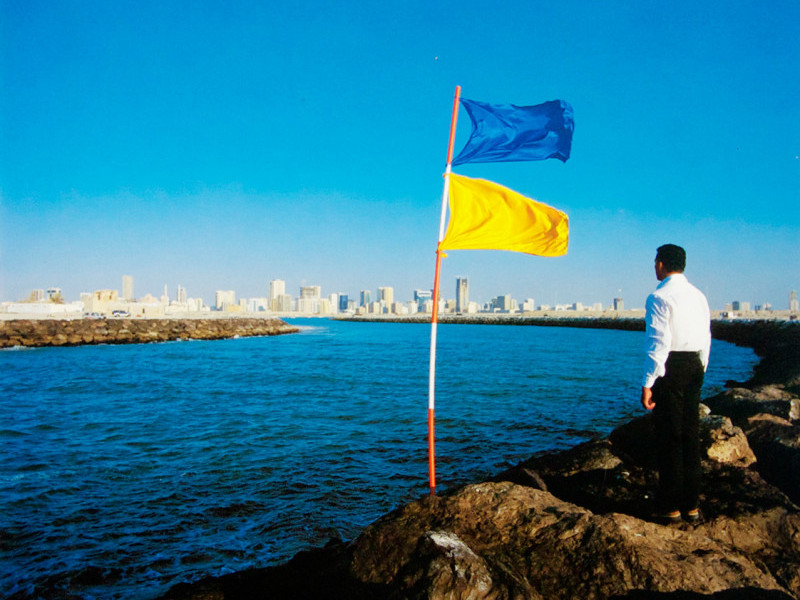
Series, 2003
Franz Wassermann
Series, 2003
Installation view
search


Franz Wassermann
Series, 2003
Installation view
1. The White Series
Material: canvas, grounded white, white paint wedge frame, pencil, black wool, nails, needles, knife and black oil pastel chalk.
Old, multi-coloured pictures are painted over with a white grounding. Through the reduction of the colours the form is also reduced: the fish emerges.
- Here traditional canvas is still used, but - contrary to the older pictures - form and colour are already in contrast reduced. The material becomes fore-grounded.
- Only the colours black and white are used.
2. The Black Series
Material: black waste bags, wedge frame, black felt-tip pen, nails, needles, black wool, black varnish and black insulation tape.
- The canvas is abandoned; instead of it, black waste bags are slit open and mounted over the wedge frame.
- Consequent use of the logo.
- Mineralization is increased by using black on black.
3. The Orange Series
Material: orange waste bags, wedge frame, black acrylic paint.
- The waste bags are no longer cut up but stretched over a wedge frame as a whole.
- Black varnish is sprayed on through two stencils:
Stencil 1: Forms which have not been produced, but have been sought and found in everyday life (e.g. drain covers, punched yoghurt cartons, etc.)
Stencil 2: The Logo
- Destruction of the traditional, one-sided picture. A picture-sculpture sprayed on both sides.
- Loops on all our sides make it possible to hang up the picture as people like it.
- Moreover, curtains, screens and sculptures can be built.
- The logo sculptures can also "swim" in the bag or pierce it.
4. The Foam Rubber Series
Material: insulation mats in different colours.
Logos are cut out, the logo is consistently used.
- The insulation mats are picture-sculptures hung on a wall.
- Sculptures
- Fluorescent sculptures: logo forms are projected into the room.
Digression
Concept For A Playful Transformation
The artist organizes a happening where he puts fish stencils and various materials at the audience's disposal. He has them spray or build pictures for the artist, which he eventually sells to the audience.
- The artist is both host and entertainer.
- The audience is the slave: it submits to the art ritual and the artist just as it submits to commerce in everyday life, for the increase of pleasure.
- The way in which pleasure is increased in our consumer and leisure culture is critically exposed.
- The artist is paid for being the supplier of ideas.

Sharjah Biennial 6